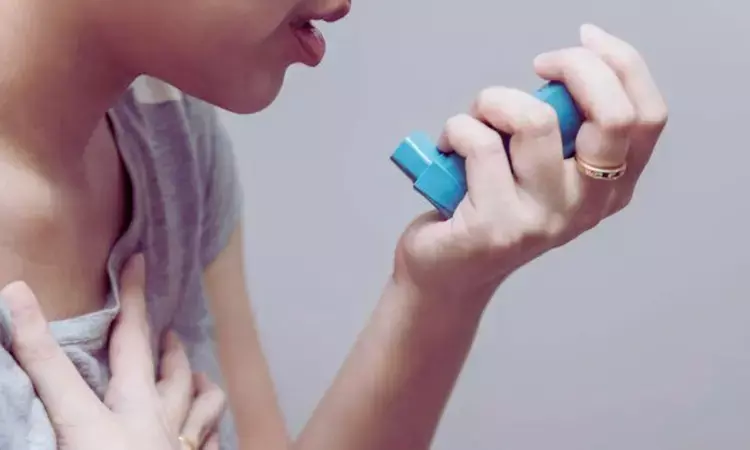- Home
- Medical news & Guidelines
- Anesthesiology
- Cardiology and CTVS
- Critical Care
- Dentistry
- Dermatology
- Diabetes and Endocrinology
- ENT
- Gastroenterology
- Medicine
- Nephrology
- Neurology
- Obstretics-Gynaecology
- Oncology
- Ophthalmology
- Orthopaedics
- Pediatrics-Neonatology
- Psychiatry
- Pulmonology
- Radiology
- Surgery
- Urology
- Laboratory Medicine
- Diet
- Nursing
- Paramedical
- Physiotherapy
- Health news
- Fact Check
- Bone Health Fact Check
- Brain Health Fact Check
- Cancer Related Fact Check
- Child Care Fact Check
- Dental and oral health fact check
- Diabetes and metabolic health fact check
- Diet and Nutrition Fact Check
- Eye and ENT Care Fact Check
- Fitness fact check
- Gut health fact check
- Heart health fact check
- Kidney health fact check
- Medical education fact check
- Men's health fact check
- Respiratory fact check
- Skin and hair care fact check
- Vaccine and Immunization fact check
- Women's health fact check
- AYUSH
- State News
- Andaman and Nicobar Islands
- Andhra Pradesh
- Arunachal Pradesh
- Assam
- Bihar
- Chandigarh
- Chattisgarh
- Dadra and Nagar Haveli
- Daman and Diu
- Delhi
- Goa
- Gujarat
- Haryana
- Himachal Pradesh
- Jammu & Kashmir
- Jharkhand
- Karnataka
- Kerala
- Ladakh
- Lakshadweep
- Madhya Pradesh
- Maharashtra
- Manipur
- Meghalaya
- Mizoram
- Nagaland
- Odisha
- Puducherry
- Punjab
- Rajasthan
- Sikkim
- Tamil Nadu
- Telangana
- Tripura
- Uttar Pradesh
- Uttrakhand
- West Bengal
- Medical Education
- Industry
Silent Lung Risk: 4 Percent of Indian Teens Show Asymptomatic Bronchial Hyperresponsiveness, APEAL Study Finds

India: A recent multicentric study published in Clinical & Experimental Allergy has revealed a concerning, yet often overlooked, aspect of adolescent respiratory health in urban India—asymptomatic bronchial hyperresponsiveness (BHR). Led by Dr. Padukudru Anand Mahesh from the Department of Respiratory Medicine at JSS Medical College in Mysuru and his colleagues, the study highlights the hidden burden of early airway inflammation among school-going children in four major Indian cities.
The study was part of the APEAL (Air Pollution Exposure on Adolescents' Lungs) project, which involved 4,141 adolescents aged 11 to 14 years from Mysuru, Bengaluru, Mumbai, and Delhi. All participants had no history of asthma symptoms or any prior diagnosis of chronic respiratory disease, making the presence of BHR in this population particularly significant. Researchers used standardized pulmonary function testing to detect BHR, defined as a post-bronchodilator increase in FEV1 (forced expiratory volume in one second) of at least 12% and 200 mL.
The study presented the following key findings:
- 4.0% of adolescents met the criteria for asymptomatic BHR.
- Prevalence varied by city: Mumbai (5.6%), Delhi (4.5%), Bengaluru (4.2%), and Mysuru (2.3%).
- Younger adolescents were more susceptible (odds ratio [OR] = 1.48).
- PM2.5 exposure was a strong risk factor: exposure between 64.1–124.8 µg/m³ increased BHR risk by 83% (OR = 1.83), and levels above 124.8 µg/m³ more than doubled the risk (OR = 2.56).
- Underweight adolescents were at greater risk of severe airflow limitation.
- Interestingly, being overweight appeared to have a protective effect, although obesity showed a similar trend, it was not statistically significant due to fewer participants in that category.
According to the authors, the results highlight the limitations of symptom-based asthma screening, which can miss early airway changes in children who appear healthy. They advocate for routine lung function testing in schools, especially in pollution-heavy urban centers to enable early identification and prevention of chronic respiratory diseases.
Despite some limitations—such as its single-time assessment and city-specific sampling differences—the study's multicentric approach and use of international protocols, such as BOLD and GAN, lend credibility to its findings. The authors urge the need for long-term monitoring of affected individuals and targeted public health strategies.
Dr. Mahesh and his team concluded, “The APEAL study highlights a silent epidemic of early airway changes in Indian adolescents, calling for a shift in asthma detection strategies to include objective lung testing, especially in high-risk urban settings.”
Reference:
Mahesh, P. A., Ullah, M. K., Greeshma, M. V., Patil, S., Samdarshi, P., Veerabhadraiah, H., Khayum, A., Agrawal, T., Phuleria, H. C., Wellenius, G., Nori-Sarma, A., Ponnuraj, L., Kagalavadi Mahadevaswamy, S. K., Mayigaiah, S. C., Thimmulappa, R. K., & Mohan, A. Prevalence of Asymptomatic Bronchial Hyperresponsiveness in Indian Adolescents: Insights From the APEAL Study. Clinical & Experimental Allergy. https://doi.org/10.1111/cea.70110
Dr Kamal Kant Kohli-MBBS, DTCD- a chest specialist with more than 30 years of practice and a flair for writing clinical articles, Dr Kamal Kant Kohli joined Medical Dialogues as a Chief Editor of Medical News. Besides writing articles, as an editor, he proofreads and verifies all the medical content published on Medical Dialogues including those coming from journals, studies,medical conferences,guidelines etc. Email: drkohli@medicaldialogues.in. Contact no. 011-43720751


